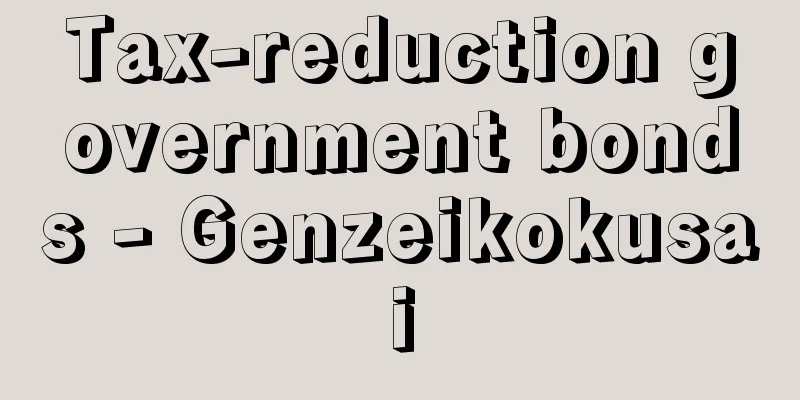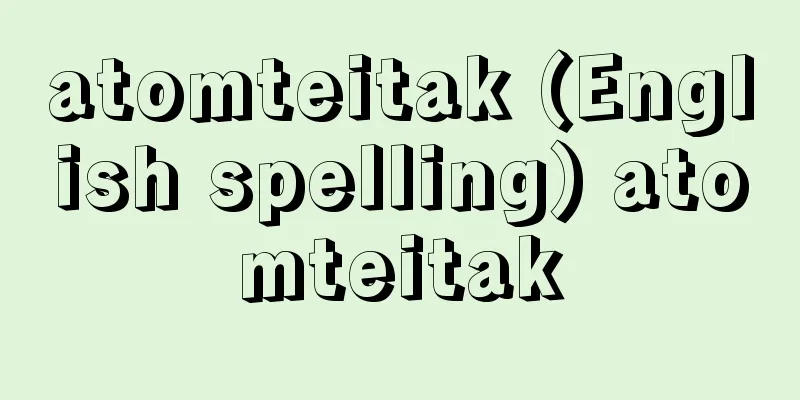Tax-reduction government bonds - Genzeikokusai

|
This refers to government bonds that come with the benefit of tax reductions. Since the Dodge Line of March 1949, Japan's finances have been balanced, but in fiscal 1953, special tax reduction bonds were issued against the backdrop of rising national savings levels and strong demands for tax cuts from corporations and individuals. The conditions for issuance were a low annual interest rate of 4%, but in order to absorb private funds, taxes were reduced by a certain percentage of the application amount for individuals and corporations that applied (25% for individuals, 21% for corporations). The planned amount to be issued was 20 billion yen, but the actual amount issued was only 14.2 billion yen. Source: Heibonsha World Encyclopedia, 2nd Edition Information |
|
減税の特典のついた国債をいう。1949年3月のドッジ・ライン以降,日本の財政は収支均衡主義がとられてきたが,53年度に至り,国民貯蓄水準の上昇と,法人と個人からの強い減税要求を背景に特別減税国債が発行された。発行条件は年利率4%と低率であったが,民間資金の吸収を図るため,応募した個人・法人に対して応募額の一定割合(個人25%,法人21%)の税の軽減措置を講じた。発行予定額は200億円であったが,実績は142億円にとどまった。
出典 株式会社平凡社世界大百科事典 第2版について 情報 |
Recommend
L'Enfant, PC (English)
… [Architecture] During the colonial period, arch...
Maria I
1734‐1816 Queen of Portugal. Reigned 1777-1816. Da...
Bateson, William
Born: August 8, 1861, Whitby, Yorkshire [Died] Feb...
Pedicularis keiskei (English spelling) Pediculariskeiskei
… [Kei Yamazaki]. … *Some of the terminology that...
Francisco Largo Caballero
1869‐1946 A gypsum craftsman and leader of the Spa...
Allergy - Arerugi (English spelling) allergy
The immune system, which is supposed to protect t...
Melanthium virginicum L.
A North American perennial plant of the lily famil...
Grain weevil (Sitophilus zeamais)
An insect of the family Curculionidae (illustratio...
Asama [Hot Spring] - Asama
A hot spring in Matsumoto City, Nagano Prefecture....
Central Social Insurance Medical Council
The Chuikyo is an advisory body to the Minister o...
Sanchi - Sanchi (English spelling)
This is a Buddhist site in the eastern Malwa regi...
Hemorrhage - Ikkehan
…Small bleeding the size of a bean or less occurs...
Lysosome
A cell organelle. Also written as lysosome. In the...
Kilo (person's name) - Kiro
According to Cheiro (real name Louis Hamon, 1866-...
Oldenborg Dynasty - Oldenborgske Linie
A Danish-Norwegian dynasty that lasted from 1448 t...









